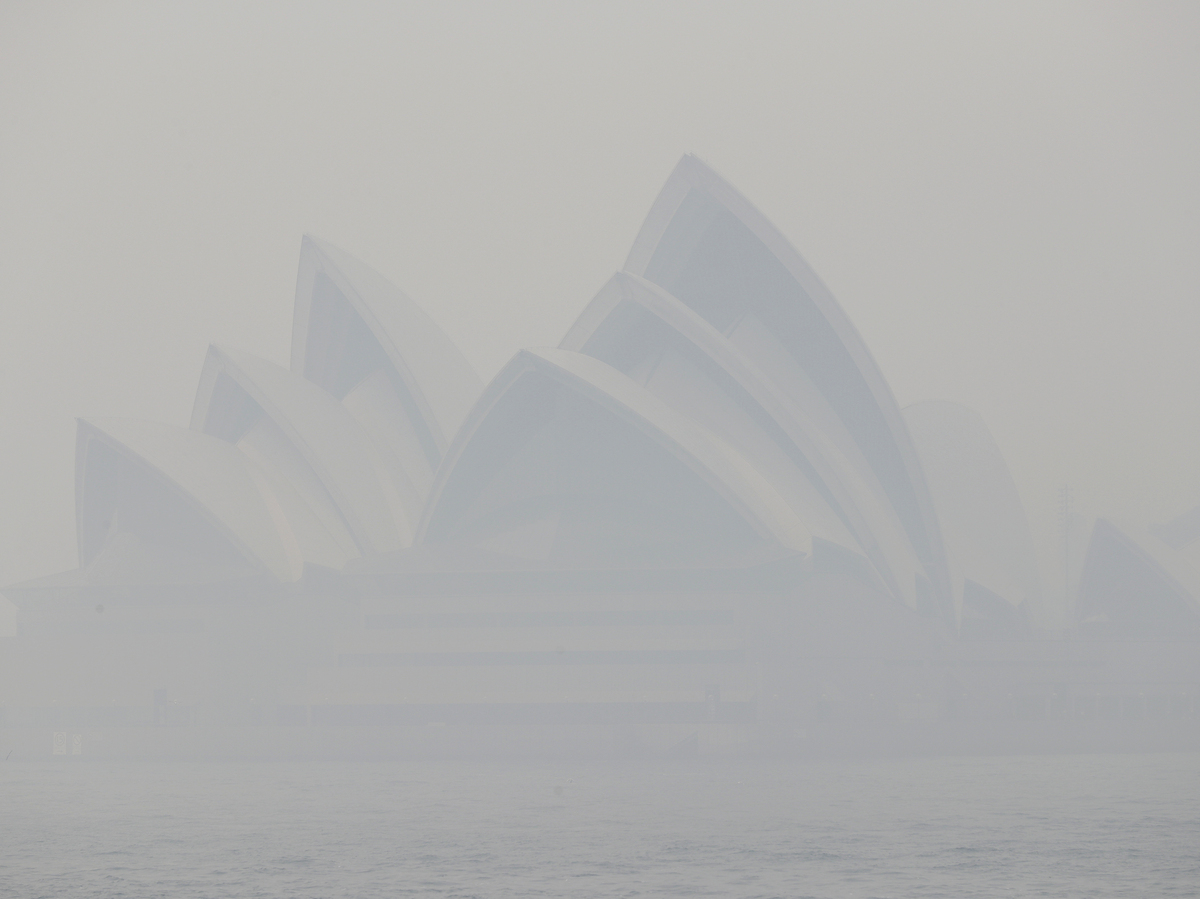
Rural Fire Service officers protect property from the Green Wattle Creek Fire along the Old Hume Highway near the town of Tahmoor in New South Wales. Dean Lewins/AP hide caption
toggle caption
Dean Lewins/AP

Rural Fire Service officers protect property from the Green Wattle Creek Fire along the Old Hume Highway near the town of Tahmoor in New South Wales.
Dean Lewins/AP
A large portion of Australia is on fire after weeks of extreme heat, strong winds and drought that have created ideal conditions for hundreds of bushfires to thrive across the country. Several fires have been burning since November, particularly in the eastern state of New South Wales.
The fires threaten many of Australia's largest population centers, including Sydney, a city of more than 5 million, which has been cloaked in smoke. Blazes have destroyed hundreds of homes and almost 3 million acres of bushland, threatening the habitat of countless wildlife, including already endangered koalas. One fire in the state of Victoria has reportedly become large enough to generate its own weather.
The fires come after years of drought in parts of the country and record-breaking heat. Earlier this week, Australia had its hottest day on record — only to break that record the following day. And fire season has just begun, leaving many bracing for worse.

Thick smoke from wildfires shroud the Sydney Opera House earlier this month. Rick Rycroft/AP hide caption
toggle caption
Rick Rycroft/AP

Thick smoke from wildfires shroud the Sydney Opera House earlier this month.
Rick Rycroft/AP
Thousands of firefighters, many of whom are volunteers, are currently deployed. Several have been injured, and two died earlier this week when a fallen tree limb overturned their vehicle. Their deaths prompted Australian Prime Minister Scott Morrison to return early from a family vacation to Hawaii — a vacation that was largely criticized as tone-deaf by much of the public.
"I deeply regret any offence caused to any of the many Australians affected by the terrible bushfires by my taking leave with family at this time," Morrison said in a statement released Friday. Morrison was scrutinized for his unwillingness to link Australia's greenhouse gas emissions to extreme fire conditions last month.
The prime minister's return coincides with a new state of emergency issued for New South Wales, the country's most populous state, as "catastrophic" fire conditions were listed for the region, the highest fire danger rating possible in the country. Andrea Peace, a meteorologist for Australia's Bureau of Meteorology, said that Saturday could be the worst day for the area, as a front moves in from the south.
"What it's going to do is bring quite a strong, gusty southerly wind ... (which) creates a really dangerous period for the fire grounds because it rapidly changes the directions of the fires there," Peace said.
She said there could be gusts of up to 100 kilometers per hour, or about 62 miles per hour.
Julia Holman, a reporter for Australian Broadcasting Corporation in Sydney, told NPR's David Greene earlier this week that the fires are already overwhelming the area.
"New South Wales is an enormous state. It's bigger than the size of Texas. And the fires literally go from the top of the state right down to the bottom," Holman said.
She said fires are very common in Australia, but not like this.
"The problem is that it's so dry that we cannot put out these fires. And that's what's different this time around," she said.
"These fires are also in very dense bushland. They cannot be put out by human effort," Holman continued. "We're waiting for rain. But we're in the midst of the worst drought on record here in New South Wales. So there is no possible way that these fires can be put out no matter the enormous human effort that is going into it."



